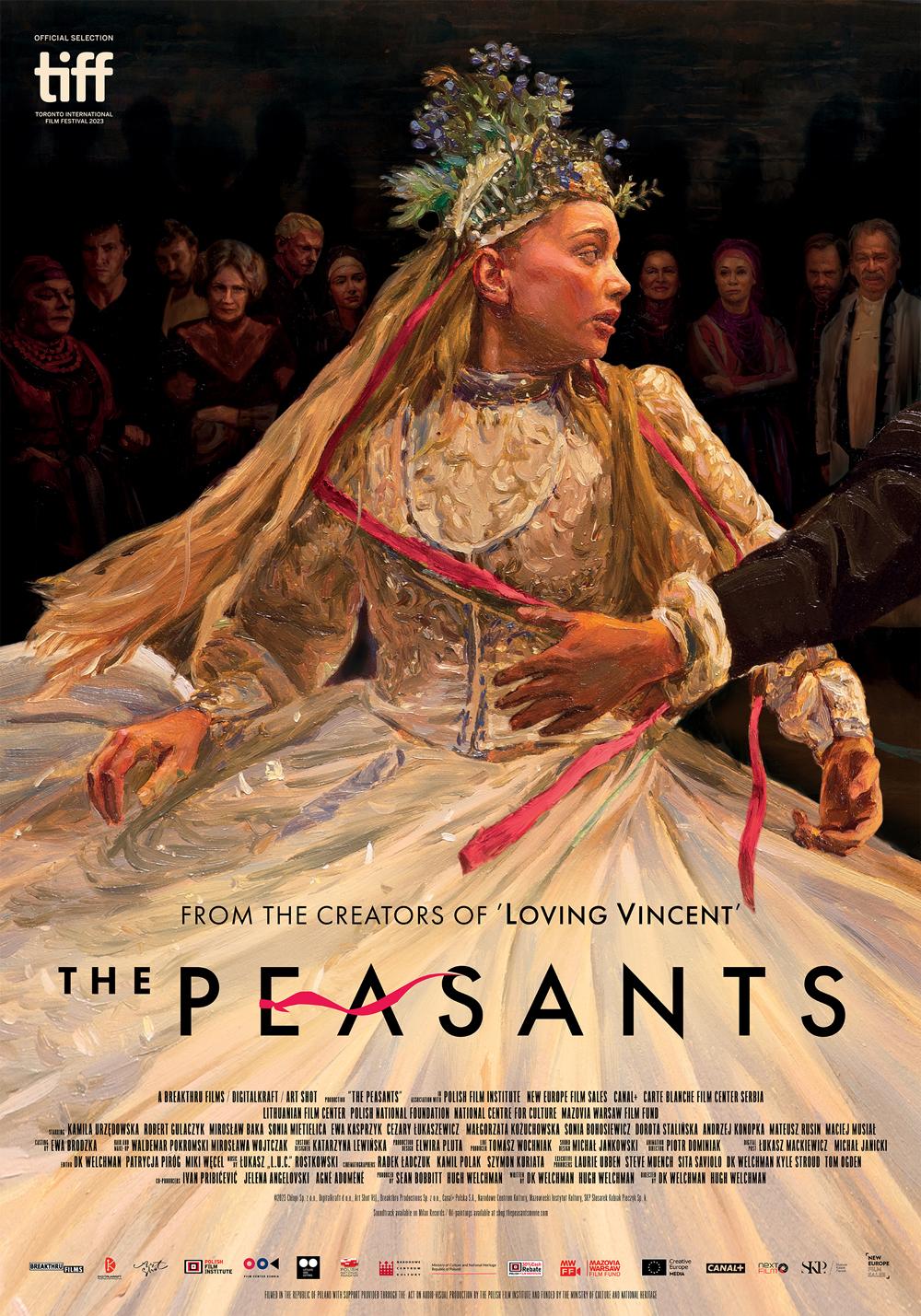Here’s the first thing you need to know about the animated romance “The Peasants”: It is abundantly and often times, dizzyingly gorgeous to look at.
Those who have seen the Polish husband and wife team Hugh Welchman and Dorota Kobiela’s 2017 documentary “Loving Vincent” will know why. An animated masterwork about Vincent van Gogh, the duo’s groundbreaking celebration and investigation of the timeless artist ambitiously brought his paintings to the big screen, while creating animated oil paintings out of the actual performances that were filmed in live action.
“The Peasants” (adapted from Władysław Stanisław Reymont’s colossal 1904 novel of over 1000 pages) is even more ambitious in its scale and scope. Reportedly, more than 100 painting animators worked on the film once it was first shot in live-action, creating at least 40,000 handmade oil paintings over those existing photographic images. Add to that the logistics of Covid and the war in Ukraine (where a big group of the directors’ painters apparently were) that burdened the production, and the achievement is an undeniably massive one. Then again, here is the second thing you need to know about “The Peasants”: Unlike in “Loving Vincent,” where the form was so deeply enmeshed with the film’s theme, the painterly animation here never feels all that essential. As tempting as it is, I wouldn’t go as far as calling it a gimmick, but the cumulative effect of paintings of live-action performances increasingly becomes a distracting one in Welchman and Kobiela’s latest effort.
To be clear, this observation should in no way be taken as a disparaging remark against animation, a miraculous medium (and not a genre) where everything and anything is continually possible. But often times during “The Peasants,” the question becomes: Why must we saddle the medium of animation by the constraints of live action? In other words, this critic would have welcomed a straight-on, handmade animated film with the same ravishingly impressionistic style, without real actors beneath the brush strokes as if they’re trying to legitimize the medium. In the end, it’s a strange exercise to detect something so earthbound underneath all the ethereal colors, movements and artistry.
The other issue with “the Peasants” is the cliched adaptation itself to a degree, which grows a tad lifeless as the plot thickens. The text—so popular in Poland that it’s mandatory reading in schools, perhaps a la The Scarlet Letter—is sufficiently feminist, following the young and gorgeous Jagna (Kamila Urzedowska) who lives in a small and highly gossipy Polish village in the 19th Century. While Jagna is both an artist and a kindly animal healer, she is often unfairly bullied by the infuriatingly patriarchal village folk due to her beauty. In their minds, Jagna could not be doing anything with her good looks other than hooking up with all the village men in secret. Though Jagna only has eyes for Antek (Robert Gulaczyk), a married man passionately in love with her. But things predictably take a troubling turn when the two embark on a secret affair while Jagna’s greedy parents push her into a marriage with the much older but wealthy widower Maciej (Miroslaw Baka). The melodrama is ever intensified by the fact that Antek is none other than Maciej’s own son.
There are expected shades of similarly themed work in “The Peasants,” which recalls everything from “Madame Bovary” to “Dogville”. Even then, the trials and tribulations of Jagna remain interesting enough for a while, as the men around her change their tune, the women subjected to the same patriarchy become cattier than ever and Jagna’s hunger for an alternative path births new desires in her. But the story overstays its welcome eventually, with the impending tragedy that would conclude the film fizzling as a result.
Still, the look itself is gorgeous. The four seasons that stretch over the tale are beautifully rendered in all their glory (shot with a combination of real locations and green screen) and the animators truly do justice to the sexual energy between Urzedowsk and Gulaczyk across their intimate trysts and frequent dance sequences, scored to haunting folk tunes. But its beauty hardly matters after a while when one remembers that this is a movie and not a museum piece. Increasingly throughout “The Peasants,” that latter characteristic overshadows the palpable feelings bubbling beneath a pretty surface.




















